Building Texture – Just the right touch

Lamb’s ears’ velvety foliage, crotons’ leathery leaves, sedums’ smooth surfaces — few elements enrich gardens like texture. But the remarkable surface qualities of foliage that compel us to reach out and touch are only part of texture’s gift to gardens.
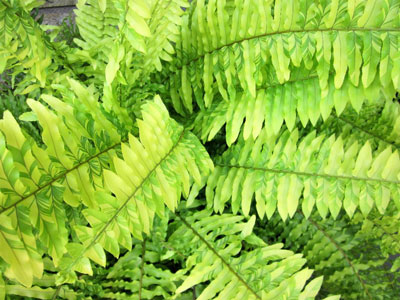

Plant shape (cone, dome, column, or ball), leaf characteristics, and plant structure all create textural impressions. Look closely. Butterfly bush is as light and airy as the butterflies drawn to its nectar-rich blooms; boxwood seems impenetrable. Plants such as ferns seem to float across the landscape; others, like iris, stand their ground.

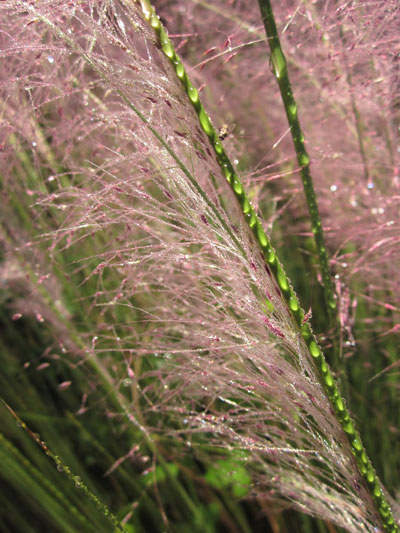
There is a capricious quality to texture, as well. In bright sunlight ornamental grass plumes sparkle with energy; on overcast days they resemble feather dusters. Time of day, intensity of sunlight, breeze or lack of breeze: often, texture is up for grabs depending on nature’s whim.
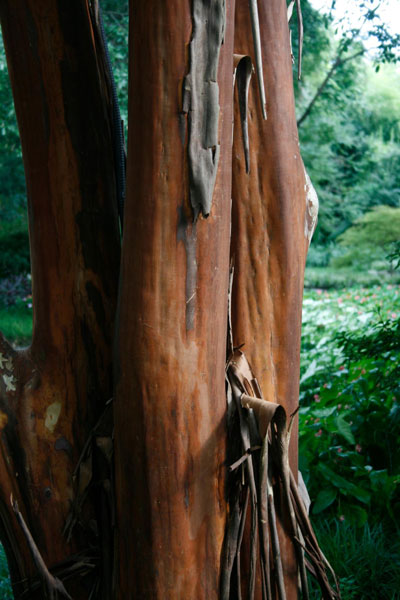
Seasonal changes are another aspect of textural variation. Plants bud, then bloom; they set fruit; they produce seedpods. In summer, foliage is the king of texture. In winter, twigs, bark, branches, and berries decorate landscapes.

Despite nature’s complexities, texture-building in its simplest form consists of combining various plants into pleasing combinations. But getting texture right takes restraint. Like too much of any good thing, too much wispy foliage or too many spiky leaves can overwhelm. For the best textural balance in beds and borders, some experts suggest mingling 1/3 finely-textured plants with 2/3 boldly-textured plants.

Once you’ve cultivated an appreciation for surface texture, learned to recognize plant shapes, and familiarized yourself with plant characteristics, the best thing to do is step aside and let Mother Nature do the rest.
Texture sampler
Fine texture: Use delicate looking plants to fill space, make small areas appear larger, and accentuate the forms and colors of other plants. Examples include baby’s breath, cosmos, asparagus, maidenhair fern, dill, spiraea, artemisia, and threadleaf coreopsis.
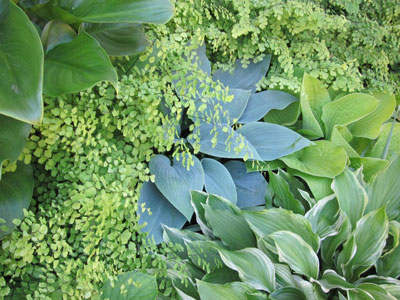
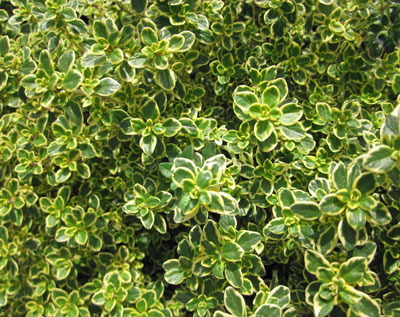
Medium texture: These beauties make up the most common category. Use them to form anchors in beds and borders. Examples include azalea, English ivy, camellia, and gardenia.
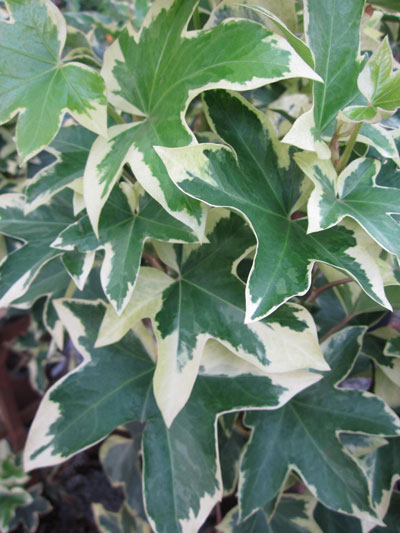
Bold texture: These drama queens possess large leaves, big flowers, and/or rough bark. Many boldly-textured plants have a tropical appearance. Favorites include hosta, comfrey, banana, saucer magnolia, canna, foxglove, and hydrangea.
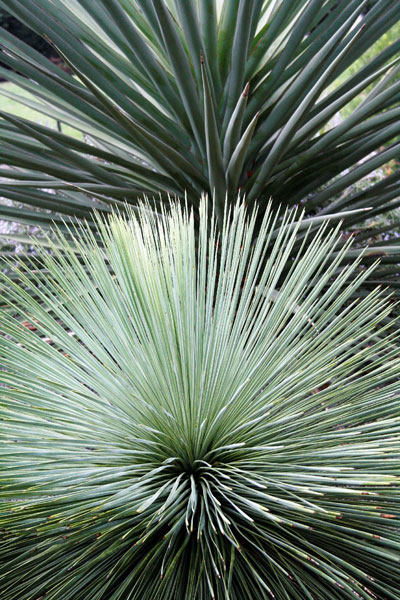
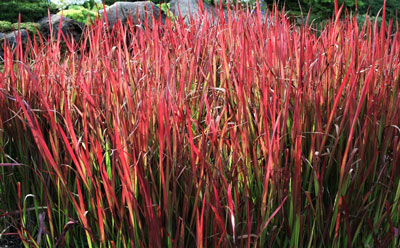
Spikes: Ornamental grass and other soft-spiked selections add texture, sound, and movement. They are ideal as specimens and accents. Use yucca, iris, agave, aloe, and other plants with coarse spikes as architectural accents.
